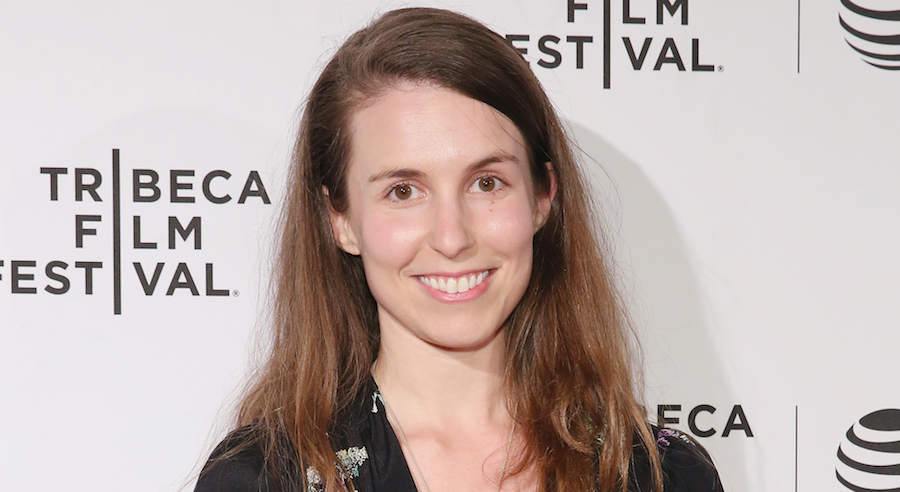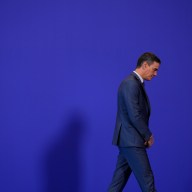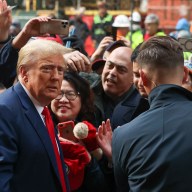“Always Shine” is only the second film Sophia Takal has directed, but she’s been around. A filmmaker and actress, she emerged in the wake of that misnomer of a very loose “movement” known as “mumblecore.” As such, she’s acted in films for Joe Swanberg (“All the Light in the Sky”), Ti West (his segment of “V/H/S”) and her husband, Lawrence Michael Levine (“Wild Canaries”). In 2011, Takal made her first feature, “Green,” about a couple (Levine and Kate Lyn Sheil) whose union is challenged when they meet a Southern woman (Takal herself). It’s taken Takal five years to follow “Green” up, but the new “Always Shine” — written by Levine and directed by her — finds her going next-level: It’s a polished, if still experimental, psychological horror by way of an art film. Caitlin Fitzgerald (“Masters of Sex”) and Mackenzie Davis (“Halt and Catch Fire”) play fellow actress friends, one successful, the other not, who go off on a Big Sur getaway. But deep-seated tensions — particularly Davis’ character’s anxieties over how her friend gets all the attention — rise to the surface, leading to a fractured narrative. Previously using handheld and all the fixtures of no-budget filmmaking, Takal busts out a film of slow zooms and flash-forwards and elegant long takes, while making a film that challenges how gender norms imprison women. Takal talks to us about testing herself as a director, relocating to Los Angeles from New York and how camera zooms are awesome.
It seems like this was made in a very open way: very constructed but still experimental. How did you describe the process you wanted to your cast and crew? RELATED: Interview: Mackenzie Davis on what “Always Shine” says about gender norms You use a lot of camera zooms, which aren’t as popular as they once were. I’m glad to see them back. I read that you used the same zoom lens as Altman used in “3 Women.” Then I just went on eBay and searched “vintage zoom lens,” and the first one that popped up was $2000. I sent it to [Schwartzbard] and he said, “It’s a zoom lens from the 1960s that was probably the same kind Altman would have used.” I bought it. It had barely been used since the ’60s and ’70s. That was basically the only lens we used the entire time. The idea of how to shoot it was that every scene was going to be shot in as few shots as possible. How much can we use movement and tracking and zooming to keeping things happening in real time? It’s a preference I have in general, so I can watch actors act. That’s my favorite thing about movies. That’s a great feature of movies that has largely been lost. In films from the ’30s and ’40s, so many of the scenes are one invisible take, where you see the actors interacting in real time. Tell me about thinking about how you would direct a script not written by you. It was written by your husband, Lawrence Michael Levine. As a writer it’s harder to let go of your ideas of how an actor should say a line. When you’re just directing, there’s a little more freedom. I don’t imagine it in any particular way. I have some idea of what each scene is about, but it’s not in my body as much as it is when I’ve written it. I felt like I could play around with the actors and try other things, not being so result-oriented about getting them to certain points. Your first film, “Green,” featured your friends and Larry, as well as yourself, as actors. What was it like directing established, professional actors? You used to live in New York, but you’ve since relocated to Los Angeles. That’s a very different place to be a filmmaker. In New York, there’s not really an industry, whereas in L.A. it’s all around you. Would you recommend to filmmakers a move to L.A.? I have friends who work in film in Los Angeles. Even if they’re not making films, they’re involved in parts of the industry. They get by. Despite what we’ve been told, in movies and books, there’s really not that air of constant competition — everyone struggling to make it and being miserable when they aren’t.
I had a tone in mind, and everyone that participated in making the movie was aware of the tone. Everyone understood the reference points — Robert Altman’s “3 Women” and “Images.” We thought about how we could create an environment that would allow us to take those kinds of chances. I feel like in the ’70s — maybe people were on drugs, I don’t know what it was [laughs] — but there was a risk-taking in those movies that was exciting. I was trying to create a space where everyone felt they could take risks, and when something didn’t work out it was OK. It didn’t have to be super slick; it could be a little messy. I’d rather have a messy movie that’s taking chances then a super slick movie that’s doing the same as everything else.
They’re cool! I guess people started thinking they were cheesy at some point. But I think they’re cool. I was referencing movies throughout. Because the movie’s about performance, it’s about actors, it’s about the entertainment industry, I wasn’t afraid of being referential. I think everyone in their lives, men and women, perform, perform their gender, who they’re supposed to be, what they perceive from the media, from movies, from magazines. Making a movie referential that is talking about the way movies influence how we behave seemed appropriate.
Not the actual lens. Slow zooms were really important to me. There were certain scenes when I was reading the script, I knew how to shoot them with slow zooms. I talked to Mark [Schwartzbard, cinematographer] about how badly I wanted to rely on slow zooms. But two weeks before the shoot, Mark emailed me and said, “About these slow zooms…” We were trying to raise a lot more money than we could get, and I basically put a lot of this movie on a credit card. He kept giving me reasons why we shouldn’t use a zoom lens. And I started freaking out. He said it would cost $10,000, $15,000. I was like, “We can’t make this movie without a zooms lens. Slow zooms are an essential part of this movie. It’s part of the tone. It’s how I first thought about making the movie. What am I supposed to do?”
Or in the ’70s with Altman. I got so lucky with Mackenzie and Caitlin. They’re great actresses, but you don’t know how much of their performances are crafted in editing. You don’t know if they’re actors who need multiple takes and you’re just going to cobble together their performance with every line from a different take. Or are they going to be able to sustain their performance for a whole shot? They were obviously able to do that. I was really relieved that the idea of how I wanted to shoot the movie was able to be executed because of the talent involved.
We live together and we talked about it all the time. The idea for the movie came from me. It was about what I was going through and anxieties I was having of not being enough of a woman, and his anxieties of not being enough of a man. We were discussing the script as he was writing it. He would always check in with me and make sure it was going in a direction I was comfortable with. But it was so exciting to go over what he wrote and have it come to life visually.
That was a big thing for me. I really wanted to work with actors who didn’t know what my aesthetic preferences were. When I made “Green” with Kate [Lyn Sheil] and Larry, I knew what I wanted. I didn’t have to say anything to them. The three of us had come up with the story and the characters; it was a collaboration from the beginning. It was really important this time to challenge myself as a director by bringing in actors who, first of all, had worked at a level of professionalism — who were used to being on a set. Makenzie and Caitlin were so great about meeting me in this space of freedom and exploration, intimacy and collaboration. I wanted to move forward in terms of how I was communicating. But then they came to me and put their trust in me and in creating this environment.
You want to make a living doing this. But in New York, it’s so expensive living here. It’s hard to think of filmmaking as anything more than a hobby. That’s not to say there aren’t filmmakers who are here and aren’t aspiring to do that or that there aren’t great filmmakers. But if you don’t come from certain background or have support from their families, you need to have another job. In L.A. there’s more work that’s, like, invisible work — writing on a TV show or in development. Development’s a bit thing in L.A.: You’re getting paid to make something that might not ever be shot or ever be seen. You’re still able to exist and make money in your chosen field.
I think it’s person-to-person. I honestly left New York to get away from New York. It was being here too long, it was the anxiety about money. I thought more about my career here than I do in L.A. Because in L.A. it is kind of like just a job. The glamour is removed. The cyclical nature of success is more commonplace there. The phrase I hear all the time in L.A. is, “He’s having his moment” or “She’s having her moment. It’s not forever. Right now she’s being paid attention to, but that might end. It’s up and down.
I thought of L.A. as this super-competitive, super-superficial wasteland. But I haven’t found that to be the case yet. Maybe it’s because I’m not successful enough to even know what’s going on with everyone else. [Laughs]
Sophia Takal talks ‘Always Shine’ and her love of camera zooms

Getty Images
Follow Matt Prigge on Twitter @mattprigge


















